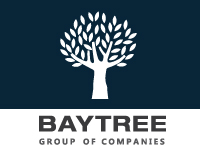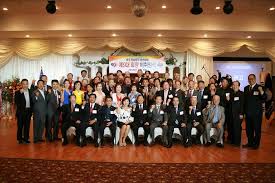CA
ON
스마트 디지탈 프린팅 - 인쇄 및 디자인
전화: 416-909-7070
4065 chesswood dr. Toronto, ON
.jfif)
싸인건설
전화: 416-909-7070
4065 Chesswood Dr. North York, ON
0.jfif)
준비된 바이어 그룹 , BAYTREE 이너써클
전화: 416-226-5999
7030 Woodbine Ave. Suite 103 Toronto, ON

홍이표치과
전화: 647-985-0456
9625 Yonge St #4, Richmond Hill, ON Toronto, ON
1.jfif)
행복부동산 -수잔정 Home Standards Brickstone Real
전화: 647-866-7878
180 Steeles Ave W Unit 30, Thornhill, ON

고려 오창우 한의원
전화: 416-226-2624
77 Finch Ave W #302, North York Toronto, ON

토론토 민박 전문집
전화: 416-802-5560
Steeles & Bathurst ( Yonge) Toronto, ON

캐나다 공인 컨설턴트 - 한인크레딧 컨설팅
전화: 416-897-8438
1 High Meadow Place, Unit 2 North York, ON

호남향우회 (토론토)
전화: 647-981-0404
7 Bishop Ave. #2411 Toronto, ON

변호사 정찬수 법률사무소
전화: +82 2-536-1144
서울특별시 서초구 서초동 Toronto, ON
1.jfif)
최고의 POS시스템 - 스마트 디지탈 POS
전화: 416-909-7070
4065 CHESSWOOD DR. NORTH YORK Toronto, ON
0.jfif)
조준상 (로열르페이지 한인부동산 대표)
전화: 416-449-7600
1993 Leslie St. Toronto, ON

It would be a place where all the visitors including me share the life stories and experiences through their activities,especially on life as a immigrant.
Why don't you visit my personal blog:
www.lifemeansgo.blogspot.com
Many thanks.
블로그 ( 오늘 방문자 수: 7 전체: 267,570 )
코스타리카의 영웅(Juan Santamaria)이야기
lakepurity
2008-02-14
... Juan Santamaria (National Hero) ...
He’s the stuff that heroes are made of. He was poor and born of an unknown father. He was a simple drummer boy in the small militia of Alajuela. He wasn’t honored at the time of his great deed, probably because of his marginality. He died young. He died for his country. He was Juan Santamaria, the poor young soldier, who was destined to become Costa Rica’s national hero, almost forty years after his great deed and after his untimely death.
Juan Santamaria was born in Alajuela, although the date of his birth isn’t clear; details about his childhood and life in general are also unknown. Most of the information about his life comes from his participation in the Alajuela militia and in the Battle of Rivas in 1856. Costa Rica had been threatened by William Walker, a Southerner who planned to enslave whole Central American countries in the name of a Southern Confederacy. Walker had managed to take over the Nicaraguan government in 1855 and to name himself “President” of this nation. Next, he looked towards Costa Rica in order to add it to his growing “empire”. Costa Rica’s president at the time, Juan Rafael Mora, gathered a makeshift army of peasants and set off to fight the enemy. The filibusters invaded the Guanacaste province, but the Tico army expelled and followed them into Rivas, Nicaragua. Here, they sought protection in a wooden fort. This is where Juan Santamaria comes into play. He bravely volunteered to burn the fort, thus forcing Walker and his cronies outside. Walker was eventually caught in Honduras in 1860 and promptly shot, since he kept making attempts to take over the region over and over again. The legend tells that Juan Santamaria ran towards the fort carrying a torch, and although he was shot repeatedly, he managed to throw it and to burn the fort down.
In 1891, almost forty years after the heroic deed, Juan Santamaria’s memory was in a sense, dug out from an indifferent past and glorified to the point of becoming Costa Rica’s hero. A statue depicting a strong and handsome soldier carrying a torch was placed in Alajuela, thus immortalizing Santamaria. For this occasion, Ruben Dario, the great Nicaraguan writer, dedicated a poem to him. Today, this hero’s memory is transmitted in schools, where some children act as filibusters and a small Juan Santamaria “burns” the fort down.
It’s interesting to consider why Juan Santamaria lay buried for almost four decades, before being remembered and named the nation’s hero. This fact has motivated heated arguments and several investigations that suggest reasons why this happened. According to Steven Palmer, a Canadian researcher that has studied many issues in Costa Rica dealing with history and national identity, Juan Santamaria was partly invented by the Liberalist government. Palmer’s fascinating study proposes that the government of the late nineteenth century needed to consolidate a national identity in order to gain support and to unify the disorganized country. Legends, heroes and battles are all necessary ingredients in the creation of a national identity, so the government set out to find people and events that would serve their purpose. Since Costa Rica has always lacked a history of warfare, the Liberalist government chose one of the few significant battles- the Battle of 1856 against William Walker. Choosing this battle was also necessary because the nation’s independence in 1821 didn’t have to be fought for, and most Costa Ricans ignored the importance of this event. The logical step after choosing the famous battle, was to select a hero that acted bravely during this fight. In this way, Palmer says, Juan Santamaria was “born” or reborn after being dead for many decades. Furthermore, Juan Santamaria was chosen because he was a member of the lower classes, and as such, he inspired them with a sense of belonging to a nation that was starting to emerge. Other researchers have found evidence that point to the fact of Santamarias death as a victim of cholera, and not of the bullets shot by the filibusters.
Even though the researcher’s accounts might seem a little cynical to most Costa Ricans who have been raised to believe in the heroic nature of Juan Santamaria, the truth is probably somewhere in the middle of both stories. Either way, one can safely say that Juan Santamaria does exist today as Costa Rica’s national hero - just ask any Costa Rican, young or old and you’ll be convinced of his existence and of his immortality.
그는 가난한 농가의 아들로 태어나, 당시 산호세 북쪽의 알라후엘라에 주둔한 조그만 군대의 드러머 보이로 근무하고 있었읍니다. 남쪽 출신의 William Walker가 중남미 여러나라를 점령하는 작전을 세워, 먼저 바로 코스타리카 북쪽에 있는 니카라구아를 점령하고, 코스타리카를 점령코져 침략했을때, 맞서싸워 Riva, Nicaragua까지 격퇴시키자, 워커 군대는 그곳에 나무로 된 진지를 구축하고 전열을 가다듬을 때, 아직 어린 Juan Santamaria는 용감하게 홀로 나서, 햇불(Torch)을 들고 적군의 진지로 돌격하여, 나무로 건조된 진지를 전소시켜 그들을 격퇴시키는 일등 공신이었지만, 그자신은 적군에 목숨을 잃었읍니다. 그후 40년이 지나 이러한 그의 민족을 지키기위한 영웅적 행위가 인정되여 추앙을 받게 됩니다. 코스타리카의 수도 산호세 국제 공항은 그의 이름을 따서,Juan Santamaria International Airport로 불려 지고 있읍니다.
알라후엘라시의 중앙 공원에는 그의 동상이 세워져 기념되고 있었읍니다.
이번 1월 중순에서 2월초까지 약 3주간 코스타리카 전역을 저희 부부는 배낭메고 여행하면서 여러곳을 보았읍니다. 정글, 화산, 온천, 정글속에서 Canopy,그리고 water fowl과 Fauna들을 눈으로 확인 했읍니다. Lonely Planet책 한권이 우리의 여행 안내역활을 했답니다.